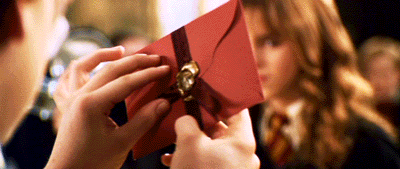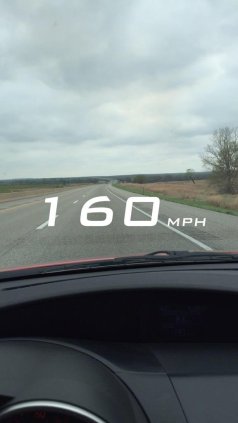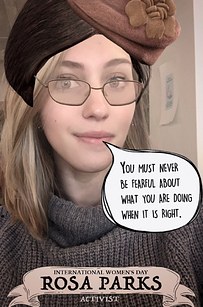Selfies are everywhere and we take them for a myriad of reasons; to commemorate special occasions or an especially good winger eyeliner, to document emotions or to prove, yes, you did, in fact meet Ed Sheeran on a particularly windy day.
Snapchat selfies
Snapchat Snapchat is a social app built for sharing selfies. It was created in 2011 by two Stanford University fraternity brothers and allows people to send photos, video, and text, which disappear after being viewed by the receiver. The sender determines how long the receiver can view the photo or video. Imagine the howlers from Harry Potter, except probably with less screaming.

(Source: Harry Potter Wiki )
The app is currently used by more than 158 Million people daily (Benner 2016), and some of its features have been the *ahem* inspiration for some recent updates on other popular apps such as the addition of stories to Instagram, or Facebook profile filters.
Snapchat profiles can be public or private. High profile celebrities such as Kylie Jenner and have public Snapchat profiles, but according to a 2015 study, said that most user surveyed reserved Snapchat for close personal relationships rather than strangers (Vaterlaus et al., p.598). Certainly, the concept of the app does lend itself to a more private, personal form of communication.
Furthermore, most of the filters users can choose from can only be accessed through facial recognition, for the purpose of producing altered selfies. Most filters are recurring, but some filters are released for special occasions. I would attribute much of the popularity of the platform to these filters, which are used on photos that are shared on every other platform. However, some of these filters have caused quite a bit of controversy.
Need for speed
In January of this year, a court dismissed claims that Snapchat’s speed filter was to blame for a highway crash. Both Snapchat and the driver, Christal McGee, were sued over claims McGee was attempting to reach 100mp/h using the Snapchat filter and hit a couple in another car in 2015. Perhaps comically, Ms. McGee posted a selfie was the caption ‘Lucky to be alive’ from the back of the ambulance immediately after the incident


(Left: The Snapchat speed filter. Source: Cherkokees Chill, Right: Christal McGee’s ambulance selfie. Source: Snapchat via. CBSNews)
Snapchat Attorney Mark Trigg wrote in a statement to the Associated Press:
“A loss for Snapchat would have been dangerous, opening a floodgate of lawsuits for everyone from cell phone manufacturers to billboard advertisers to makeup brands — virtually anyone that can potentially cause a distraction from driving. Snapchat’s win instead diverts blame from these companies and requires responsible use of these technologies by the driver.”
Blackface and the scientific smoky-eye
But Snapchat selfies haven’t only been controversial because of the potential danger they might cause, but also because of the dangerous messages they might send. Snapchat was accused of promoting blackface early last year with a Bob Marley filter.
Just this week, filters for International Women’s Day have put Snapchat under scrutiny once more. Snapchat released three filters in honor of the day, each celebrating a diverse and accomplished woman; Frida Kahlo, Rosa Parks and Marie Curie.



(From left to right: The Frida Kahlo, Rosa Parks and Marie Curie Snapchat filters for International Women’s Day. Source: Buzzfeed. Images by Caroline Kee via Snapchat)
These filters were generally well-received, but it was the latter of the three which caused a stir. Users criticised the alterations it makes to the face of the selfie-taker; face slimming, skin perfecting ‘foundation’, smokey eye-makeup and flase eyelashes.
Snapchat users took to social media to express their disdain, one user summing up their arguments quite succinctly:
The reason this is so distressing is to users may be because:
“By repeatedly performing gender roles, selfie takers produce new social norms and rituals”-Williams & Marquez 2015, p.1777
That is, users are concerned that by placing emphasis on makeup and physical appearance in the Marie Curie filter, users or observers of the filter may inadvertently come to believe (or already believe )that conformity to traditional concepts of female beauty is linked to success as both a woman and a female scientist.
Selfies are everywhere, and it so begs the question: should we be more conscious of the impact the selfies we share may have? Are we moving into a new era of politically and socially conscious selfie-taking? Let me know your thoughts in the comments below, or tag me (@AmyByTheWindow) in your selfies on Twitter or Instagram.
-Amy
References:
The Associated Press, 2017, ‘Judge rules Snapchat immune from distracted driver claim’, The Seattle Times, 23 January, viewed 9 March, <http://www.seattletimes.com/nation-world/georgia-court-dismisses-car-crash-lawsuit-against-snapchat/?utm_source=RSS>.
Benner, K 2016, How Snapchat Is Shaping Social Media, The New York Times, weblog post, 30 November, viewed 9 March 2017, <https://www.nytimes.com/2016/11/30/technology/how-snapchat-works.html?partner=rss&_r=0>
CBS, 2017, ‘A win for Snapchat in crash lawsuit tied to speed filter’, CBS News, 23 January, viewed 9 March 2017, <http://www.cbsnews.com/news/snapchat-speed-filter-accident-lawsuit-claim-dismissed/>.
Kee, C 2017, ‘People Are Rolling Their Eyes At This Snapchat Filter For International Women’s Day’, Buzzfeed News, 9 March, viewed 9 March 2017, <https://www.buzzfeed.com/carolinekee/people-are-mad-about-snapchat-marie-curie-filter?utm_term=.rh2rDAEel#.yyAbWXDmB>
taliacalandra 2017, ‘I met Ed Sheeran today…’, 8 March, Twitter post, viewed 9 March 2016, < https://twitter.com/taliacalandra/status/839709521152978945?ref_src=twsrc%5Etfw>.
Vaterlaus, J, Barnett, K, Roche, C, & Young, J 2016, ‘“Snapchat is more personal”: an exploratory study on Snapchat behaviors and young adult interpersonal relationships’, Computers In Human Behavior, 62, pp. 594-601, Inspec, EBSCOhost, viewed 9 March 2017.
WILLIAMS, A, & MARQUEZ, B 2015, ‘The Lonely Selfie King: Selfies and the Conspicuous Prosumption of Gender and Race’, International Journal Of Communication (19328036), 9, pp. 1775-1787, Communication & Mass Media Complete, EBSCOhost, viewed 9 March 2017.










